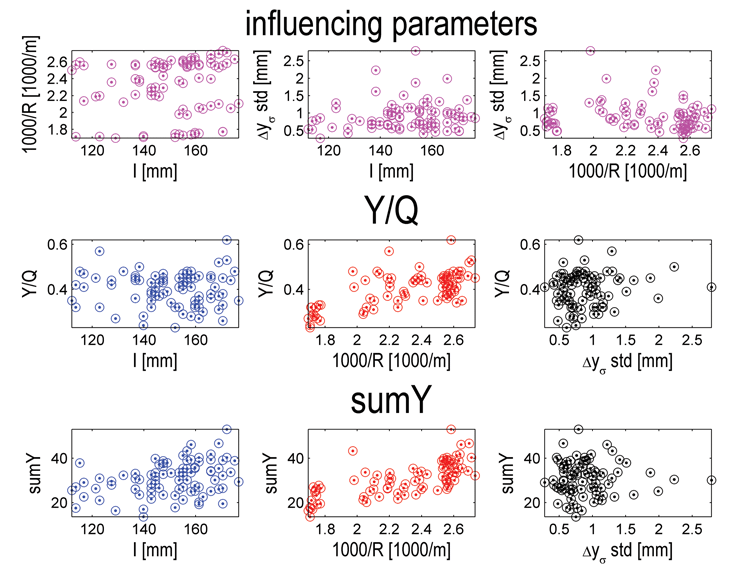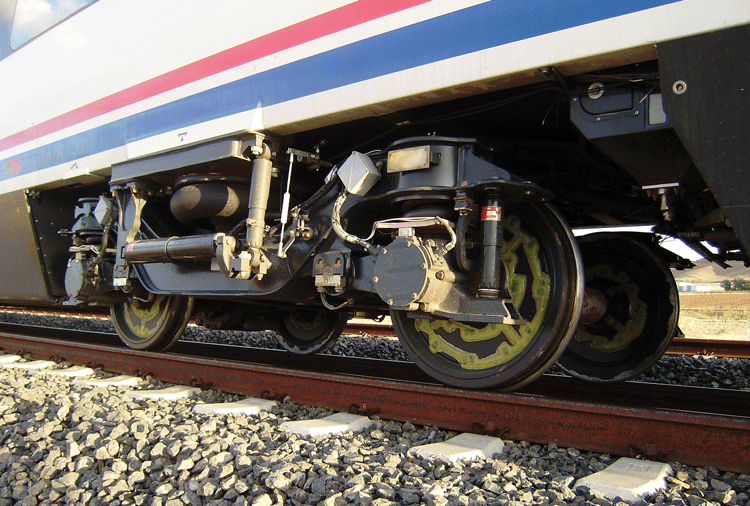The new EN14363:2016 standard: Improving the running safety of rolling stock
Posted: 15 March 2016 | Javier Camacho de Miguel (CETEST) | No comments yet
The European Standard EN14363’s main goal is to ensure the running safety and reliability of rolling stock through the testing for acceptance of their running characteristics. It is the reference standard in Europe but is also followed by many other non-European countries. Accredited test laboratory CETEST has performed tests according to this standard all over the world. An updated version of this key standard has just been published. CETEST’s Field Test Area Manager, Javier Camacho de Miguel, analyses this new release that improves the method and knowledge of rolling stock dynamic behaviour.


Dynamic behaviour assessment of railway vehicles is one key step of their homologation process. To gain acceptance of a new or modified vehicle regarding its dynamic behaviour is a complex process, beginning with the definition of the test specification, going through a demanding test campaign, and ending with the approval of the analysis and test report.
The assessment is performed in two stages: the first concerning flange climbing risk when running through twisted track (between other stationary tests for which CETEST uses its portable test benches that are usually transported to the train manufacturer’s facilities), and a second on-track evaluation.
On-track dynamic behaviour testing requires the simultaneous testing of several points, including the measurement of wheel-rail contact forces (under Normal Method). It will incorporate the design, manufacturing and calibration of dedicated instrumented wheelsets, which requires a high degree of specialisation of the involved laboratory. CETEST’s instrumented wheelsets are a sensing system capable of measuring, in an uncoupled manner, the contact forces between the wheel and the rail. They are obtained through the direct measurement of stresses experienced by the wheel and uninfluenced by the wheel/rail contact point position.
As dynamic behaviour of a vehicle is a safety related assessment, it is necessary to agree on a test method capable of properly assessing the complex phenomena that are involved in vehicle-track interaction. Standard EN14363 and UIC leaflet UIC518 define a test method for assessing the dynamic behaviour of railway vehicles, being both based in the same principles and foundations.
After the approval in 2005 of the third version of EN14363, different bodies have continued to work on the development of the test and assessment method. In addition, the experience gained from the application of EN14363:2005 on homologation processes has highlighted weaknesses and requirements that are difficult to fulfil. Consequently, modifications and updated versions have since been published; among them the UIC (International Union of Railways) published in 2009 the fourth version of UIC518; the European Railway Agency published a guide for application and modification of EN14363:2005 –ERA/TD/2012-17/INT; and the constant work of Workgroup 10 (Vehicle/Track Interaction) along with its different subgroups has led to the approval in March 2016 of the latest version EN14363:2016.


Figure 1: Influence parameters’ plot for independency analysis. Visualisation of assessment values vs. influencing parameters
EN14363:2016 includes several updates with respect to the 2005 version. The following are only some of the relevant upgrades of the method described on EN14363:2016:
Multiple regression method
The tests are carried out in specific track sections covering a few parts of the entire railway network. Therefore, statistical methods are applied in order to predict future highest values for the evaluation parameters. These maximum estimated values are compared with the restrictions. On-track test results depend – in a more or less deterministic way – on operational and track conditions, such as curve radius, cant deficiency, speed or track quality. In the new version of the standard, the multiple regression method has been introduced. These different input parameters are used for estimating the assessment variables considering a linear approximation. This way, the multivariable linear regression method allows for assessing the vehicle’s dynamic behaviour under specified target test conditions of speed, cant deficiency, curve radius and track quality.
Different approach to track quality
Experience from test campaigns showed that it was not easy to find test sections meeting all of the requirements of the standard regarding the track geometric quality. In the new version of the standard, the 90th centile is considered as the target value for track quality parameters, instead of both the 50th and 90th centile – that were considered in previous versions (related with track maintenance parameters such as QN1 and QN2).
Contact condition
Regarding contact condition, a stability analysis apart from zones 1 to 4 is now included. In addition, target contact conditions are defined for stability analysis, and for zone 1. For zones 2, 3 and 4, the equivalent conicity is not considered as an influence and the only request is to avoid a narrow range on contact geometry conditions.
Simulation
Simulation is enhanced with respect to the previous version. Guidelines on how to analyse simulation results and correlate it with experimental results are given. A complete 30-page Annex is dedicated to the simulation of on-track tests.
Assessment magnitudes
New assessment magnitudes are included, including new track load related magnitudes, such as combined rail loading quantity Bqst and rail surface damage quantity Tqst. Radial steering concept is also introduced and described.


Figure 2: CETEST’s instrumented wheelset solution
Description of the requirements
Finally, in general, one of the main upgrades of the new version relies on the content and description of the requirements themselves. The new version gives a better description of the reasons for the requirements. Additional information is given and the requirements are better justified. It is in the scope of the new version not only to describe a test and assessment method under a pass/fail criterion, but to describe a method which leads to a test campaign that will result in information and comprehension of the dynamic behaviour of the vehicle – which includes a definitive pass/fail criterion.
EN14363:2016 has managed to describe a test method whose representativeness of the results is increased with regard to a vehicle’s dynamic behaviour. Dispersion in test results due to the test method is decreased. In addition, the possibility of joining test zones together – the new and less strict ranges for speed and cant deficiency for multi-dimensional analysis – facilitates the achievement of a test campaign that meets the requirements of the test method.
The implementation of this new standard entails the review of internal procedures and methods for laboratories. Its approach (focusing on the understanding of the dynamic behaviour rather than in the mere assessment value – limit value comparison) involves deeper data analysis tools and procedures. CETEST will continue working to improve the test performance always under the quality and safety premises of an accredited railway test laboratory.


Issue
Related topics
Bogies & Wheelsets, Rolling Stock Orders/Developments, Safety







